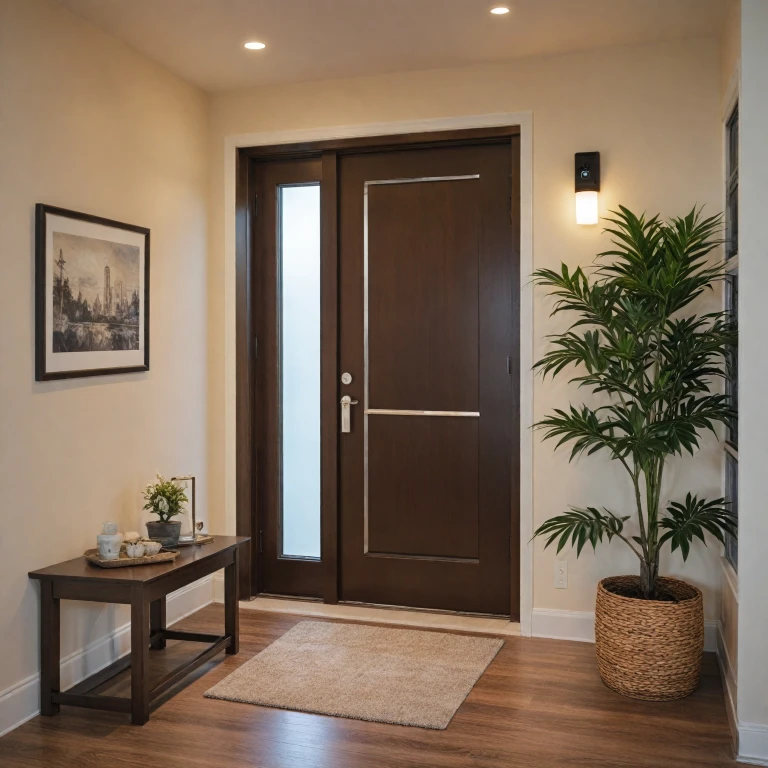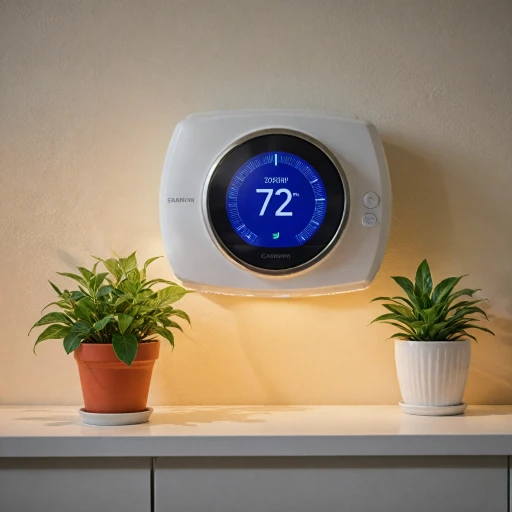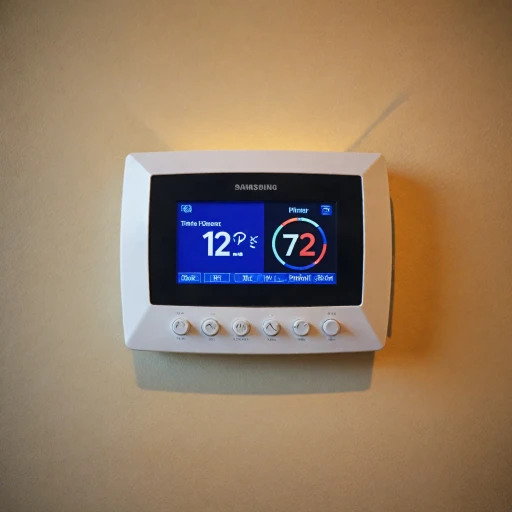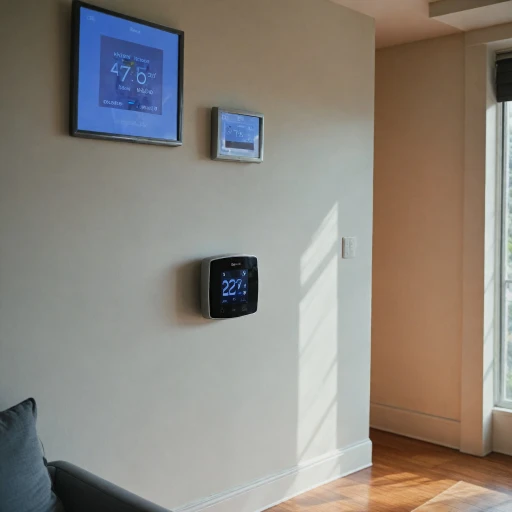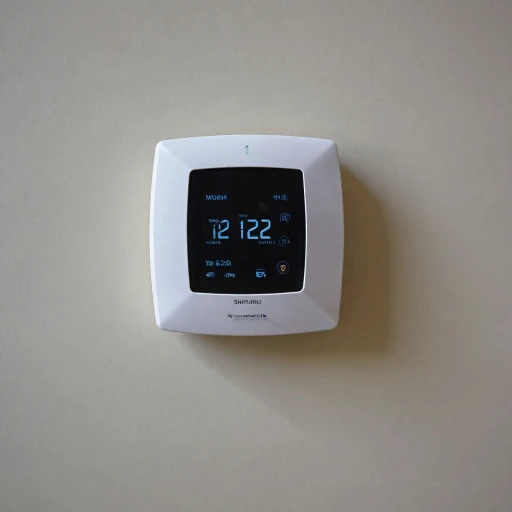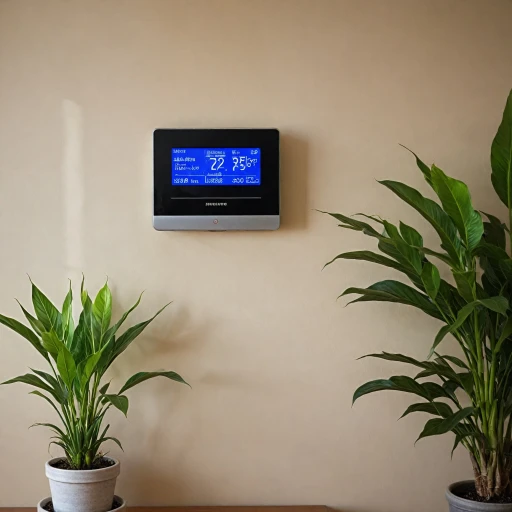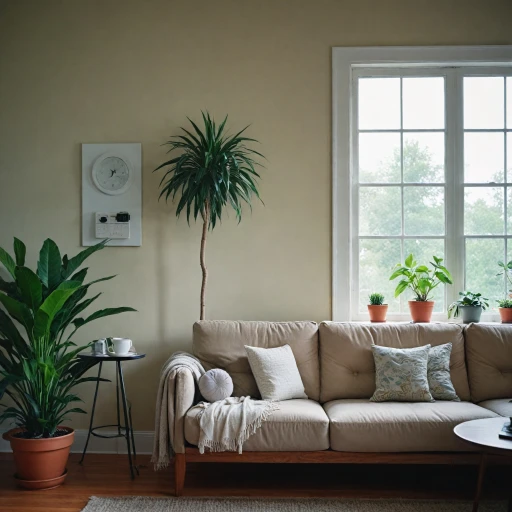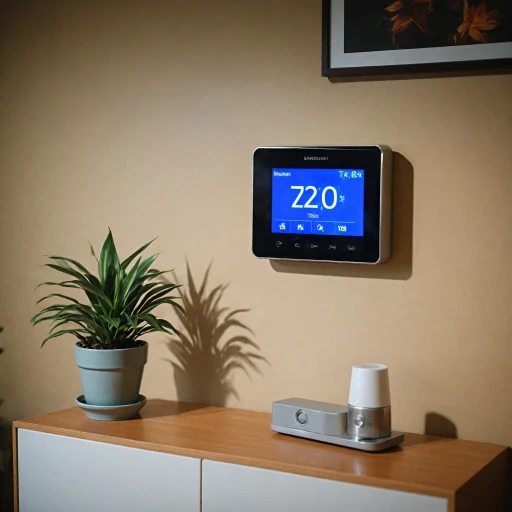
Introduction to Smart Thermostats
Exploring the Basics of Smart Thermostats
Smart thermostats have become an essential element in today’s digitalized home environment. They are designed to optimize your home's climate control system by learning your habits and adjusting the temperature automatically. Not only do these devices provide comfort, but they also aim to enhance the energy efficiency of your household, which can lead to significant cost savings.
With integration of advanced sensors, smart thermostats can detect changes in room temperature and occupancy. This capability allows them to make informed decisions and adjust heating or cooling accordingly. The user-friendly interface often comes with compatibility for devices like Amazon Alexa, Google Assistant, and Apple HomeKit, making it easy to control through voice commands and mobile apps.
For connectivity, smart thermostats may use various protocols like Zigbee, a popular choice for smart home devices owing to its low power consumption and secure networking. Options like the integration with remote sensors can improve temperature accuracy in rooms located far from the central thermostat, or in areas less frequently used.
Brands such as Aqara and Tuya offer smart thermostats that are compatible with various hubs, such as Zigbee hub, and electronic assistants, expanding their utility in diverse smart home ecosystems. These features collectively render smart thermostats a valuable investment, improving both convenience and energy management in your home.
Energy Efficiency and Cost Savings
Boosting Energy Efficiency with Smart Thermostats
In today's connected world, energy efficiency and cost savings have become crucial considerations for homeowners. Smart thermostats stand out as a key solution in this regard. By leveraging advanced sensors and automation, these devices offer a significant reduction in energy consumption, which translates into lower utility bills. Smart thermostats intelligently adjust your home's temperature based on various inputs, such as the presence of occupants or ambient conditions. By using zigbee technology, these thermostats can interact with sensors like the Aqara door sensor or window sensors to detect changes in the environment. This ensures that heating or cooling systems only operate when necessary, minimizing wastage. Moreover, the integration with voice assistants such as Amazon Alexa or Google Assistant allows users to control their thermostats with simple voice commands. The seamless compatibility with eco-systems like Apple HomeKit and SmartThings Aeotec provides even greater flexibility in managing home energy use effectively. One of the striking features is the ability of these devices to provide real-time monitoring and feedback. With connected sensors and echo devices, homeowners can track energy usage and optimize settings to achieve enhanced energy efficiency. By understanding patterns and preferences, smart thermostats help maintain a comfortable living environment without unnecessary energy expenditure. Long-lasting battery life and the option for battery-powered operation make smart thermostats versatile and easy to install. Brands like Tuya Zigbee and Sonoff Zigbee offer products with robust performance. However, it's noteworthy to mention that some thermostats may require a zigbee hub or another smart hub to function at their full potential. When considering a smart thermostat, the initial price investment may be offset by the long-term savings in energy costs. Popular products like the thirdreality zigbee thermostat offer a reliable way to enhance your home's energy efficiency. For more insights on how smart thermostats can enhance comfort and efficiency in your home, you can further read about how to enhance your home comfort with remote sensors here.Integration with Smart Home Ecosystems
Seamless Integration with Your Smart Home
The compatibility and integration potential of smart thermostats with existing smart home ecosystems greatly enhance their appeal. Utilizing protocols such as Zigbee, smart thermostats can connect effortlessly with various devices to create a cohesive home network. Many smart thermostats are compatible with Amazon Alexa and Tuya Zigbee devices, allowing users to control the temperature through voice commands via Amazon Echo or other smart assistants. For those utilizing Zigbee hubs, such as those from SmartThings Aeotec or Sonoff Zigbee, the integration process is streamlined. These hubs act as central control points, enabling seamless communication between the thermostat and other smart devices like door and window sensors. Additionally, when paired with door and window sensors from brands like Aqara, you can further enhance your home's energy efficiency. For instance, a zigbee door sensor can trigger the thermostat to adjust settings when a door is opened or closed, optimizing the indoor climate in real time. This integration not only bolsters energy conservation but increases the overall convenience of managing a smart home. Moreover, some smart thermostats support ecosystems like Apple HomeKit, expanding the range of compatible products and allowing users to create more personalized smart home scenarios. Whether it's turning off the heat when a window is detected open by the Aqara hub, or adjusting temperature settings at the sound of your voice, integration capabilities are instrumental in maximizing utility. Explore more about American standard thermostat manual integration for additional insights on optimizing device connectivity.User Experience and Remote Control
Effortless Control and Enhanced Accessibility
Smart thermostats have revolutionized how users interact with home climate control systems. With seamless integration into any smart ecosystem, these devices offer unparalleled convenience. Users can control their thermostats in real-time from anywhere using their smartphones or other smart devices, such as the Amazon Echo or Google Assistant-enabled products.
Comprehensive Smartphone App Features
Most smart thermostats come with user-friendly apps that provide an overview of when and how energy consumption is distributed throughout the day. Whether you're using an Apple HomeKit, SmartThings Aeotec, or a Tuya Zigbee system, these apps allow users to set schedules, analyze energy usage, and adjust settings remotely.
Interactivity with Other Smart Devices
Besides standalone functionality, smart thermostats improve user experience by pairing with other smart devices in the home. For instance, some systems interact seamlessly with Zigbee-based products like the Aqara Door Window sensors or ThirdReality Zigbee sensors. The integration into a hub-required ecosystem, whether it’s an Aqara Hub or a Zigbee Hub, allows for further interactions where a thermostat might alter settings based on the contact status of a door or window.
Voice Control and Other Smart Assistants
Users also enjoy hands-free interaction through voice commands. Whether it’s an Alexa-enabled device or an Amazon Echo, activating heating or cooling has never been easier. By communicating directly with your virtual assistant, adjusting the temperature via voice command is both intuitive and instantaneous.
Extended Product Lifespan and Battery Efficiency
Advanced battery life is crucial for maintaining reliable smart thermostat operation, often supported by regular software updates over time. Appropriate management ensures that device compatibility and energy efficiency remain optimal, within the context of a comprehensive smart home setup.
In an interconnected world, smart thermostats are proving indispensable as they adapt and evolve with evolving user needs, offering comfort and energy savings without compromising on user control or system reliability.
Security and Privacy Concerns
Safeguarding Your Smart Thermostat
Security and privacy are crucial concerns when incorporating smart thermostats into your home, much like any other connected device such as smart door sensors or Alexa-enabled devices. With digital threats on the rise, it's important to ensure your home’s intelligent systems, including those using Zigbee technology, are well-protected. Firstly, while smart thermostats are designed to integrate seamlessly with other smart products such as Amazon Echo and Zigbee door sensors, ensuring their security is vital. Many smart thermostats connect to your Wi-Fi or a dedicated Zigbee hub to communicate efficiently with other devices. This connectivity, while beneficial for user convenience and remote control, could potentially open pathways for cyber intrusions if not secured properly. To mitigate these risks:- Enable Strong Password Protection: Always use strong, unique passwords for your smart thermostat accounts and accompanying apps. It's equally important to change default credentials to reduce vulnerabilities.
- Regular Software Updates: Like your phone and computer, smart thermostats continuously evolve, with manufacturers releasing updates to patch any discovered security vulnerabilities. Ensure that these devices, whether they are from Aqara or Sonoff Zigbee, are using the latest firmware.
- Secure Your Network: Setting a strong password for your Wi-Fi network and possibly using a guest network for Smart Home devices can add an extra layer of security.
Future Trends in Smart Thermostat Technology
Emerging Trends and Future Innovations in Smart Thermostat Technology
The world of smart thermostats is constantly evolving, with innovations that promise to revolutionize how we manage our home environments.- Advanced Sensor Integration: With the increasing demand for energy efficiency and personalized comfort, smart thermostats are embedding more advanced sensors like zigbee, aqara, and others. These sensors are not only adept at monitoring temperature but can also integrate with door and window sensors to optimize HVAC operations when detecting motion or open doors and windows. Such smart integrations minimize wastage and enable seamless automation.
- Enhanced Voice Control: As smart assistants like Alexa and Amazon Echo continue to dominate the market, smart thermostats are becoming more compatible with these platforms. This means you can control your heating and cooling system using simple voice commands through devices such as Amazon Echo, adding convenience to the user experience.
- AI and Machine Learning: These technologies are setting the stage for smarter environmental control. With AI and machine-learning algorithms, future smart thermostats will learn your preferences over time, automatically adjusting settings to enhance comfort and efficiency. This means real-time data analysis and predictions for proactive temperature adjustments.
- Integration with Smart Home Ecosystems: As smart homes become more integrated, thermostats will increasingly function as part of a larger ecosystem. Compatibility with hubs like SmartThings Aeotec and Aqara Hub is improving, allowing thermostats to coordinate with various devices, such as door contacts and window sensors, for optimal performance.
- Focus on Privacy and Security: As with any device connected to the Internet, security, and privacy remain top concerns. Future smart thermostats will likely implement stronger encryption methods and more comprehensive user controls to ensure your data remains protected.
- Battery Life and Power Management: With advancements in battery technology, smart thermostats and their sensors are expected to offer longer battery life, enhancing the reliability of devices that don't require constant recharging or new batteries. Expect better power management strategies, not just for thermostats but also for connected devices like amazon echo and contact sensors.
